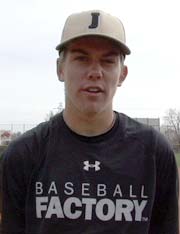Ask Doug: Playing Center Field
Doug Glanville is working with the Baseball Factory and Team One Baseball as a Special Consultant. He will be writing articles and looking for your questions and feedback. If you have a question for Doug, please email him at [email protected]
Q: I have two questions to ask you: first, it”s about defense, especially playing center field, I remember that you played center field and I want to know if it”s better to play shallow or to play deep in center field, what”s the secret to get the best jump to be able to catch every ball. Do we have to position ourselves differently against different type of hitters? As soon the ball is hit, did you already know where the ball is going to land?
Second, it”s about hand-eye coordination: are there any specific drills to improve hand-eye coordination.
Thanks and take care. Serge
A: As a center fielder, you are the captain of the outfield. This makes you responsible for positioning your fellow outfielders and knowing every hitter inside and out. One big advantage in preparing at the major league level is that every team has scouts to research all of your opponents. By the time you play them, you have a lot of data to help you prepare a plan.
But most levels don’t have scouts. So you have to find your own creative ways to learn your opponent. In high school, we only played 24 games a season, so it was harder to obtain advance data on an opponent, but as the center fielder, you have the best view in the house. Being able to see the game in front of you helps you learn the tendencies of the other players so that the next game against this team or even the next inning, you can make adjustments.
You also have to take into consideration all of the elements of the game. Wind, weather, the speed of the grass, the warning track, how the ball plays off of the walls. It should be a long list, but eventually you have to tailor the final factors on the hitters. Every hitter has a pattern. Do they hit the ball to the opposite field a lot? Do they like to choke up with two strikes and slap the ball? Do they hit a lot of line drive in the gap? Are they dead pull hitters?
Whenever we played a new team, we had meetings to go over all of these patterns. We also had to talk to the pitcher that day to understand how he was going to pitch him. If he was going to pound him inside or throw a steady diet of change-ups, we had to put that into the plan. Randy Wolf always had one or two hitters in the lineup that he wanted us to play differently than his “chart.” Mostly because he had a good change-up that he would throw in any situation and with any count.
There is no one set place for you to play. Even with all the information, you still have to play to your strength as an outfielder. I liked to play shallow because I was very good at going back on balls. I also was constantly in motion to prepare for a good jump. My outfield coach in the Cubs minor leagues was the legendary Jimmy Piersall who demanded that we start moving as the ball crossed the hitting zone. By the time contact was made, you already had a step or two. If you had a bad angle, you can adjust.
After a lot of practice, you could generally tell where the ball was going to land. So it became running to a spot and getting there in position so that if there are runners on base, you are in a strong stance to throw to the cutoff man or to the base where a runner may be tagging up.
Working on drills that work on your depth perception is great for outfielders, but there is nothing like taking balls off of the bat. Batting practice is a good time to practice taking fly balls off of the bat. I would run hard after balls during at least one group as if it was game situation. Practice, practice, practice!
If you have a question you would like to “Ask Doug,” please email [email protected].
Doug Glanville attended and graduated from the University of Pennsylvania with a degree in Systems Science and Engineering. Glanville was drafted 12th overall by the Chicago Cubs in the 1991 amateur draft. Glanville played nine seasons in the Majors, getting his break with the Cubs. He also spent six seasons with the Philadelphia Phillies and a portion of the 2003 season with the Texas Rangers. In 1999, Glanville batted .325 with 204 hits, 101 runs, six homeruns, 73 runs batted in and 34 stolen bases. He led the league in singles with 149 that year. Glanville joined the Baseball Factory as a Special Consultant at the end of 2007.








